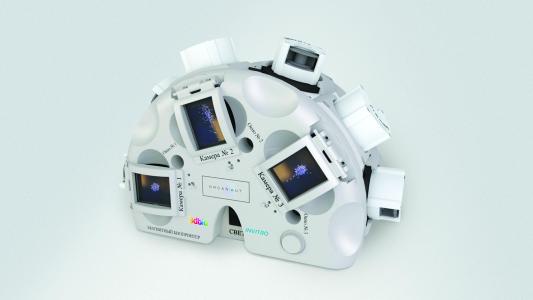Our bodies have a natural repair system for bone injuries — break one, and stem cells will swoop in to start growing new cartilage and bone to repair it.
For particularly bad breaks, though, doctors will sometimes help this natural bone healing along by implanting a scaffold at the site of the injury.
These structures help guide the development of new cells before eventually dissolving into the body. Doctors can even seed them with substances that promote cell growth to cut down on healing time.
While these scaffolds get the job done, researchers have developed a new kind of scaffold system that they believe is more versatile than existing options and could lead to better bone healing after major injuries, such as spinal fusion procedures or the removal of bone due to cancer — and it’s inspired by LEGO blocks.
Advanced Bone Healing
The new scaffold system consists of hollow, 3D-printed cubes the researchers call “microcages.” Each is about the size of a small flea, and they can be stacked together in a variety of configurations — just like LEGO.
The idea is that a doctor could use the same blocks to build a scaffold for any injury — just adjust the configuration. This would save them from having to design and 3D print a brand new scaffold for every broken bone.
Because the cubes are hollow, doctors can pack them with “growth factors,” substances (usually proteins and hormones) that promote bone healing.
They can even place different growth factors at different spots in the scaffold, ensuring precise delivery — for example, they could pack ones that support the growth of spongy bone right where spongy bone is needed, and ones that support compact bone growth where it’s needed.
“Consequently, this creates an instructive scaffold, where cells can be guided exactly to the location of interest,” researcher Luiz Bertassoni from Oregon Health & Science University told New Atlas. “This is very important, since a huge bottleneck in the field is, for instance, to get blood vessels in the core of the regenerated tissue before more tissue can form.”
When the researchers tested the system on bone injuries in rats, they found it prompted about triple the blood vessel growth of conventional scaffolds, according to their study, published in the journal Advanced Materials.
Next, the researchers plan to test the ability of their microcrages to promote bone healing in rats and larger animals with more complex fractures.
Soft Tissue Repair
The team used materials designed for bone healing to build its microcages. But they believe the same design could facilitate soft tissue healing — helping repair damaged muscles, tendons, and organs — if constructed out of different materials.
Looking even further ahead, they predict that the microcages might even help scientists grow brand new organs in the lab from stem cell-seeded scaffolds.
This is something researchers are already trying to figure out how to do, but existing approaches have a significant limitation, according to University of Utah bioengineer Robby Bowles, who wasn’t involved in the study.
“(T)o a large extent, those techniques don’t allow you to introduce (the) kind of the organization of gradients and the patterning that is in the tissue,” he told The Scientist in February. “There is no control over where the cells go in that tissue.”
The hollow design of the OSHU team’s microcages could potentially allow scientists to overcome that hurdle, helping make the dream of organs on demand a reality.
We’d love to hear from you! If you have a comment about this article or if you have a tip for a future Freethink story, please email us at [email protected].






